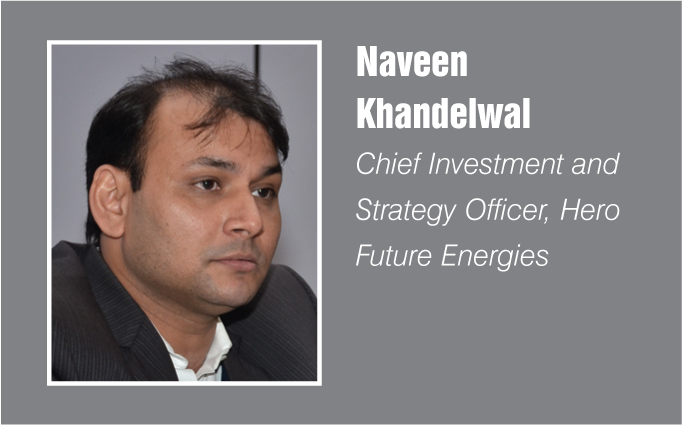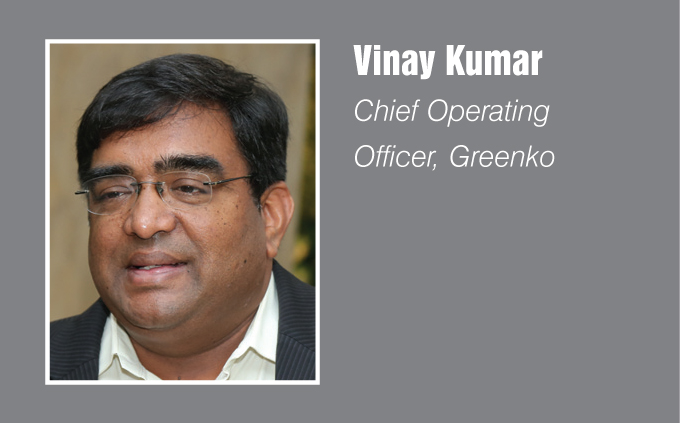
While the renewable energy sector in India is taking rapid strides in capacity addition, grid curtailment and offtaker risks cast a large shadow over project sustainability. As the tariffs discovered in solar and wind competitive auctions continue to fall, the sacrosanct fabric of the power purchase agreements (PPAs) is being questioned as discoms look to renegotiate prices. At a recent workshop held by Renewable Watch, key project developers put forth their views on offtake risks and renegotiation of PPA terms and conditions. Excerpts…
What has been your general industry experience so far and what are the primary risks?
The investor community, both in debt and equity segments, believes that if risks pertaining to the cost of capital come down, higher returns can be expected in terms of the reduced cost of energy, which will ultimately benefit the government as well as the public. Given that PPAs are usually signed for 25 years, investors/developers are not making significantly higher returns. If the risks or uncertainties are very high, then returns will have to increase or investors will lose interest in the market. So, that is the clear message regarding grid curtailment risks, which may not be visible right now due to lack of supply of projects, but I am sure the moment supply of projects increases, that would get reflected.
Currently, the country’s grid is capable of handling an installed power capacity of about 350 GW and this is expected to go up to 500 GW. It must also be understood that small interventions such as PPA renegotiations, delayed payments among others, will dissuade investors. If the developers, or discoms or policymakers want to make short-term gains, by all means they should, but one also needs to look at the long-term implications of the actions being held.
Grid curtailment has two kinds of issues – technical and commercial – and every now and then the commercial reason gets into the garb of the technical issue. Sometimes, either the substation is not able to take the load or the line is not going to take the load. As mature renewable energy players, we know the truth behind veiled excuses. But I think that behaviour is slowly and gradually getting corrected.
The problem with the Indian power industry is that the entire system including the regulators and the independent power producers (IPPs) is designed for conventional power. The system has not been designed for renewable energy. It is obvious that a new source of energy comes with its own set of complications and uniqueness. So, incremental reforms and adjustments are not the solution to the issues of lack of contractual clarity and sanctity. A research by professors at the Stanford University states that by 2020, the cost of generation from solar is going to be so low that it is going to attain a point called “God parity,” that is, when the cost of generation becomes lower than the cost of transmission. This implies that even if the cost of coal-fired, gas-fired or nuclear generation were free, it would be too expensive to compete with solar. So, the question is that how do PPA structures and regulations keep pace with this kind of change?
As far as the offtake risk by discoms is concerned, one of the things that have contributed to its mitigation, especially the payment risks, is the Ujwal Discom Assurance Yojana. It has helped state utilities like those of Rajasthan improve their financial condition drastically. However, the issue of power subsidies, which is weighing down the cash-strapped discoms, needs to be addressed.
The issue of curtailment has always been tricky, given that there is no transparency about the reasons behind the move. This is something that we need to look at seriously. A part of the problem has, however, been resolved by removing Power System Operation Corporation Limited (POSOCO) from under the ambit of Power Grid Corporation Of India Limited and providing it with a certain amount of autonomy in operating the grid and being fair to all generators whether conventional or renewable players.
The first risk prevailing in the market relates to PPA/tariff renegotiation. For the time being, there is a breather in the PPA issue because of where module prices are at present, domestically and internationally. There has been a kind of stagnation of prices, eventually leading to a rise in module prices. Therefore, to safeguard against PPA risks, the first thing is to have a strong credit risk assessment. The second is to have a stringent PPA. Having a PPA is one thing; its enforceability is totally different. Contract law enforceability in India is not too strong. Another significant risk is change in law. As of now, there is no tax on the generation and sale of solar power, or for grid-connected utility-scale projects or for rooftop solar power. Now, the delta between grid-based power and solar power could be Re 1, Rs 2 or Rs 3. In the case of Maharashtra, commercial grid-based power is even more expensive as discoms sell it at Rs 11, Rs 12 or even Rs 13 a unit. So, solar power offers significant savings for clients. Therefore, imposing any change in laws governing tariffs is one of the toughest things for PPAs. Any costs that a developer has until today are built into the pricing and anything that comes in afresh would be to the client’s account, which is extremely difficult to negotiate. If we reach a scenario where heavy taxes, duties, penalties and cess are imposed on rooftop solar generation, or if solar power becomes more expensive or savings start eroding, the client will definitely try and renegotiate the terms of the PPA.
We welcome competitive bidding in the wind power space as it is a good move for the government and the consumers. But here are a few things that the government must do in order to ensure that it is a complete success. First, PPAs should be signed on time. Second, power must be evacuated in full and not partially. Third, all payments must be made on time. Fourth, the renewable purchase obligations that each state sets must be complied with.
As far as the signing of PPAs on time is concerned, we have the example of Maharashtra, where a couple of years ago, about 1,000 MW of PPAs were delayed, which resulted in nearly Rs 40 billion worth of non-performing wind power assets in the state. So, the delay in the signing of PPAs and then renegotiating it sends a wrong signal to investors, especially the banks and the international private equity investors.
In the evacuation of renewables, there has been significant progress. About three to four years ago, we were asked to back down our plants by nearly 40 per cent. This eventually improved and went down to 25 per cent, and in 2017-18 and part of 2016-17, it was less than 5 per cent. A number of measures have been taken to improve grid availability. For instance, thermal power plants are being backed down during the wind season in a phased manner – 2,000 MW at a time. Further, grid corridors are being strengthened while scheduling and forecasting is being done effectively by the National Institute of Wind Energy over the last couple of years on a substation-wise basis. Moreover, the provision of selling power to the southern regional grid has immensely helped. As far as meeting RPO targets is concerned, renewable energy certificates (RECs) have been a subject of discussion over the last few years with Rs 750-Rs 800 million of investments stuck in REC-based projects. Luckily, in the past few months, good trading of RECs resulted in almost 50 per cent of RECs being wiped off the inventory. This can be seen as a good sign of utilities taking RPO targets more seriously.
In view of these concerns, if a concerted effort is put forth, we can collectively try to achieve the 175 GW target by 2022. The industry needs to go about it in a phased manner, meet the supply demand gap and move forward.
Are the offtake risks and curtailment issues just teething problems or signs of a maturing market? What is your outlook for the next five years?
Naveen Khandelwal
To my mind, these are not teething issues but lack of clarity of on the part of the government. Moreover, it is about not looking at the larger picture because this has nothing to do with whether solar is evolving or maturing, and could have happened to any other sector. If somebody wants to question a PPA, they can question coal PPAs or gas-based power PPAs as well. So, there are a few fundamental issues that need to be addressed. There is a lack of clarity on the government’s part about what their precise role is. When the government starts thinking too much about commercials, then the focus on policymaking and the larger picture is lost. Fortunately, the Indian renewable energy sector is evolving at the right pace and the country is adding capacity at the right time. So, I do not see our cost of energy going up any way. However, if we start questioning as to when we will get to a tariff of as low as Re 1, then it is about losing the larger picture and becoming myopic in the view. We need to think again about what we have set out to achieve and act accordingly. The enforcement of the contract is a different discussion altogether but as far as PPAs are concerned, discoms also need to understand that their business model needs to evolve in terms of their role in the power sector. In fact, policies are not being made from a holistic point of view. On the one side, open access is encouraged and on the other, all kinds of restrictions are imposed either by not allowing developers to access the grid, or having net metering policy in place but not actually permitting it, or even imposing additional surcharges at regular intervals, thereby burdening the consumers. This shows that the policymakers are absolutely unclear in terms of what is to be achieved. So, this is not a teething problem but an issue that calls for top level decision-making and prioritisation of objectives.
Vinay Kumar
PPA issues are more directly linked to the price of power, which is being rediscovered with every tender. Except for a short lull, if one looks at the long-term perspective and assume that prices are going to continue falling the way they have in the recent past, I only see a chance of more friction coming up in the interpretation and implementation of PPAs. Discoms are going to find loopholes in any possible way to wiggle out of a commitment but within the bounds of the PPA. A classic case is discoms trying to renegotiate PPAs, especially when developers are not able to meet time lines. So, if the commercial operation date has been missed, the extension is not automatic. Instead, they try to reduce and renegotiate prices, however, with regulatory consent. These are the risks that increase friction and it is more likely to aggravate if the developers are not meeting their commitments.
Ritu Lal
The legality of contract enforcement is a country-wide issue and not limited just to the power sector. So, the industry will have to push for legal reforms for resolving these issues and mitigate the varied risks that exist. These risks will continue to exist through the next four or five years in the distributed rooftop segment.
Venkatachalam
The risks in the present scenario can be termed as teething problems. In fact, discoms do get excited when they see some interesting tariffs discovered in the neighbourhood. The present situation is akin to what it was two to three years ago, when accelerated depreciation (AD) was discontinued and there was a sudden lull in the wind power market with negative sentiments. Then AD and part of the generation-based incentives were reintroduced and the market picked up again. Now, the competitive bidding regime has again thrown up a new dimension that the industry is getting used to. There was a bit of an excitement in the market when the prices fell to Rs 2.44 per kWh and discoms think that they can now renegotiate their PPAs which were signed at Rs 4, but such things will fade with time as discoms and other parties involved realise that one cannot really tamper with signed sacrosanct contracts.







